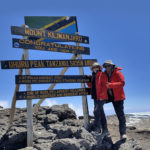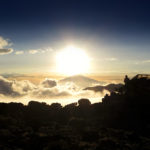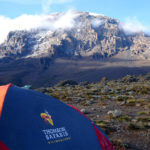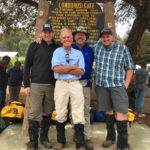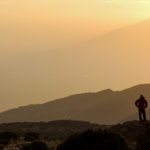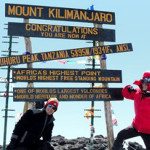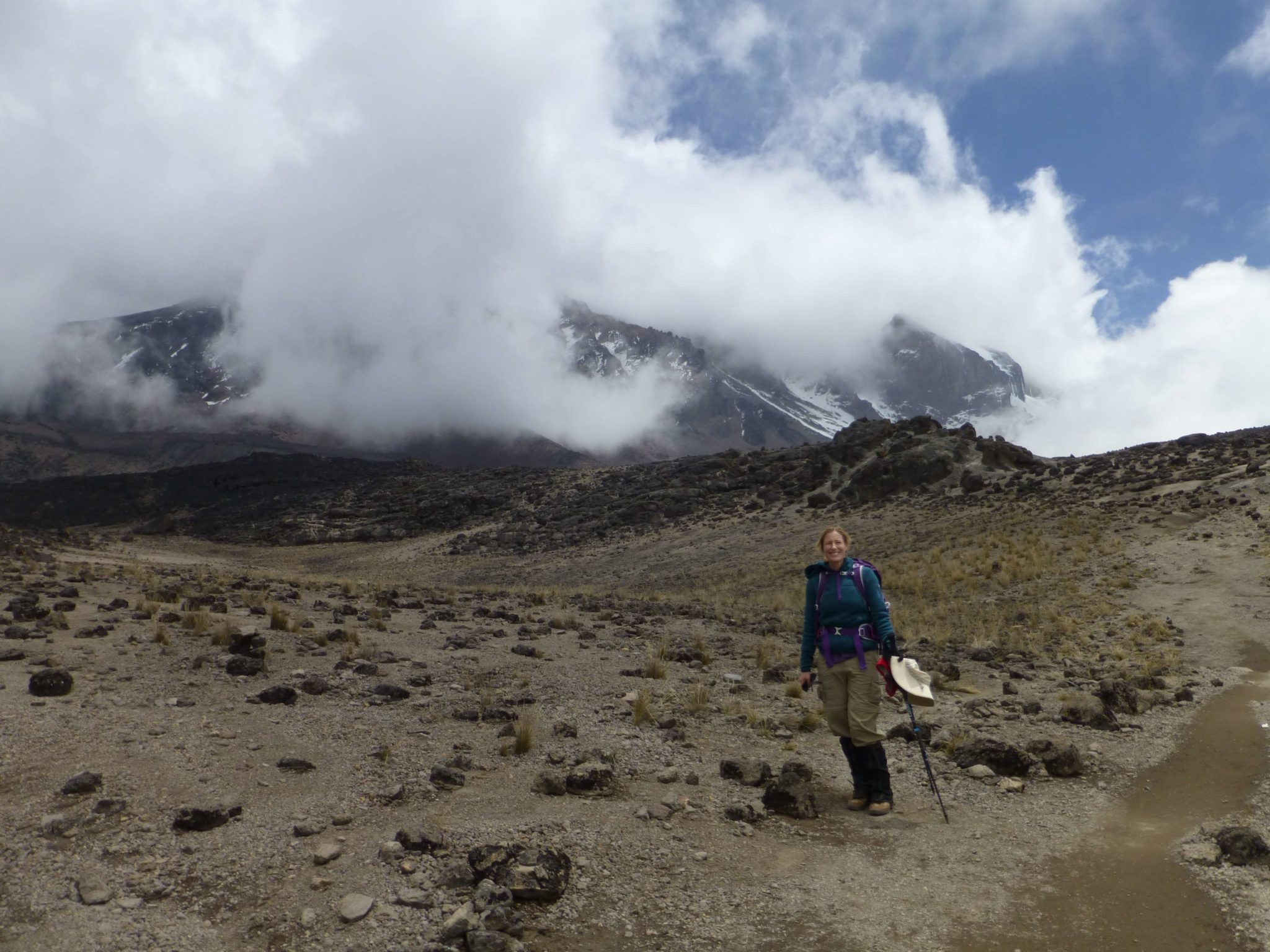
The Start of a Dream
Twenty years ago, I met a group of women who were planning to hike Kilimanjaro. They invited me to train with them; I could barely keep up.
I loved their energy, and they were so enthusiastic about their adventure, that I put Kilimanjaro on my bucket list, too.
They sent me a postcard from the mountain, which I’ve had on my refrigerator for twenty years. The dream of climbing this mountain never left me.
Mental Toughness
It took me until 2010 to start training, but it wasn’t until this January – 2016 – that I stood on Kilimanjaro’s slopes.
Before I left a friend reminded me that hiking at high elevation was all mental. She encouraged me to use the sport psychology skills I teach others: mental toughness, staying focused, and perseverance.
On Kilimanjaro, I practiced walking meditation: I would dedicate a portion of the trail to people I cared about, and walk that section for them. Dedicating the goal to something larger than myself helped me find strength I didn’t know existed.
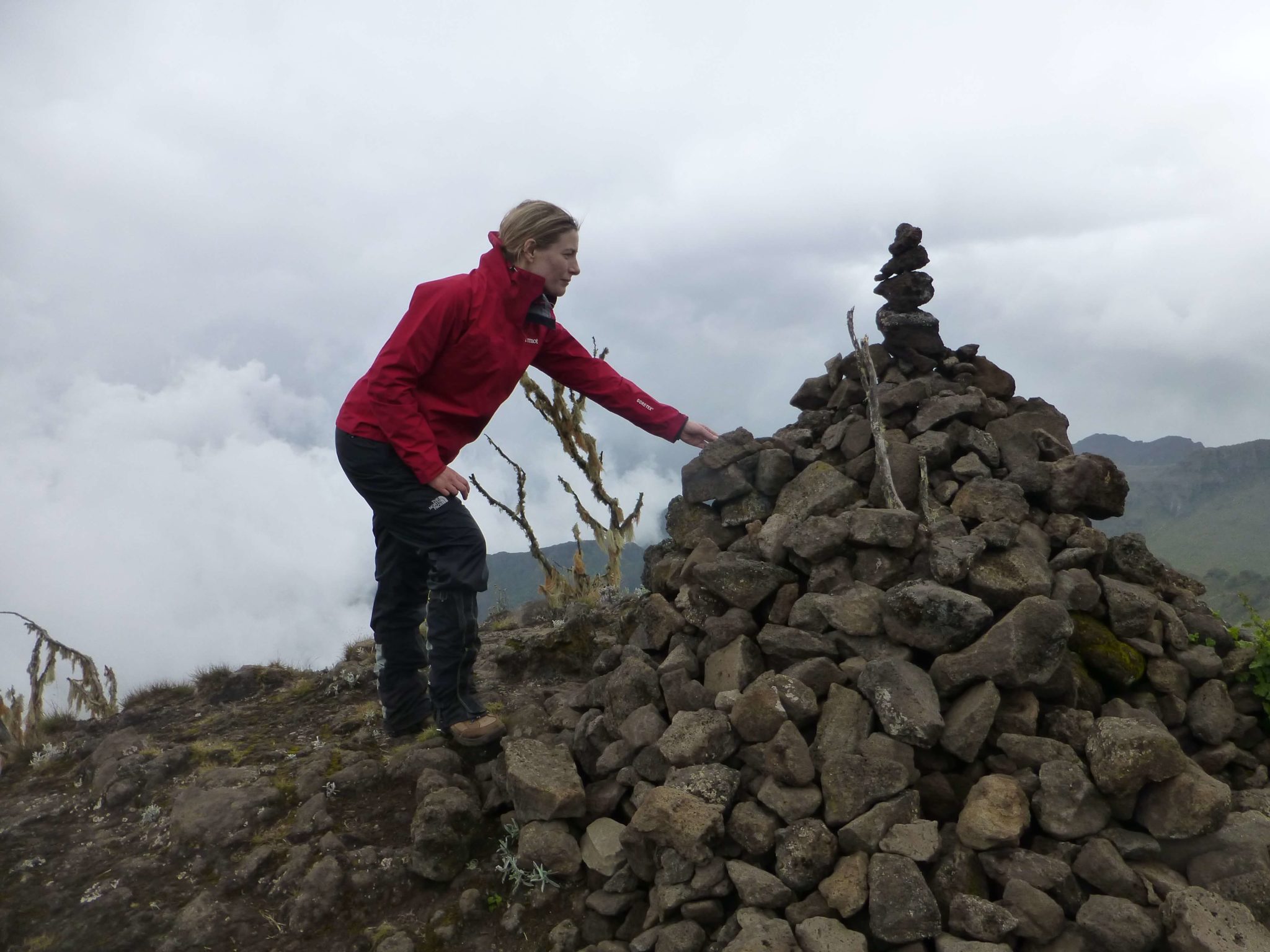
Turning Pain into Perseverance
Around 15,000 feet I started getting altitude sickness. To focus my mind I thought about people who had hurt me and felt the sting of it within my body, breathed into those areas while walking, and used the pain as fuel. Step by step, I felt these old hurts dissolve and begin to transform, until there was only forgiveness. I felt lighter and stronger as I continued up the mountain.
Approaching the Final Climb
On summit day I awoke at 4AM and was on the trail by 5, feeling like a zombie.
They say things are often hardest right before you reach your goal. By 17,000 feet I was struggling significantly with energy, and throwing up repeatedly.
My body screamed at me to stop, but I kept reminding myself that just because it was difficult didn’t mean I had to give up. I kept focusing on my goal, going one step, one breath, at a time.
By 6pm, it became apparent I wouldn’t reach the summit that day. But I was camping that night in Crater Camp, near the summit. Even though I had no appetite, I tried to eat and get some sleep as the winds howled outside my tent.
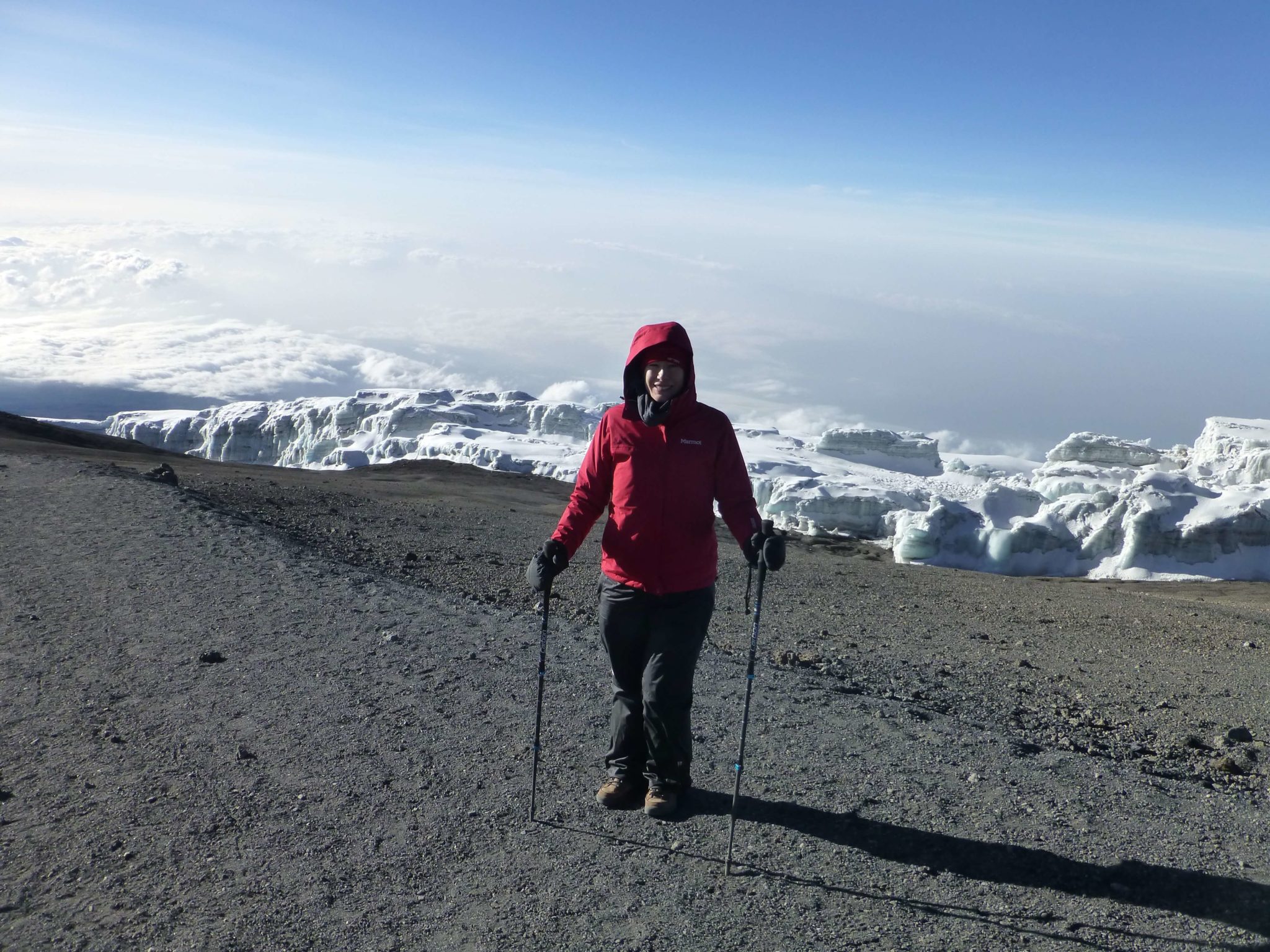
The next day, I was on the trail by 5 AM again. I joined hikers who had been traveling since midnight to reach the peak. The air was thin, it was hard to breathe, and a windy snow storm had started.
Step by step by step, I kept going. I thought of all the amazing people who had supported me on this journey, and was flooded with gratitude. I could feel their energy supporting me and cheering me on to keep going.
I think it was them—even though many of them were thousands of miles away—that helped me finally reach the summit that day. What this trip taught me is that any summit is achievable, if you keep working towards your goals one small step at a time and surround yourself with people who believe in you and the possibility of your dreams.
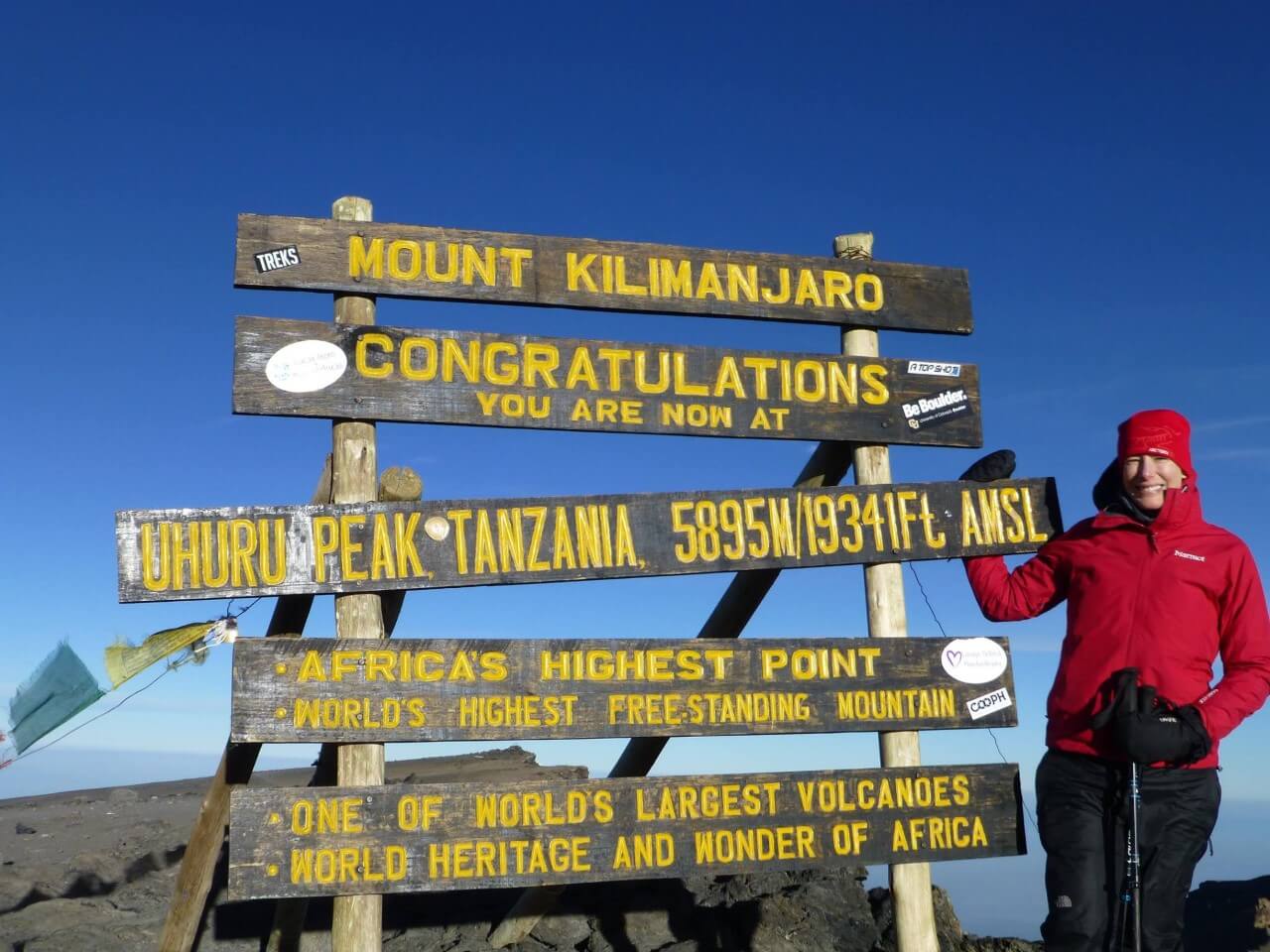
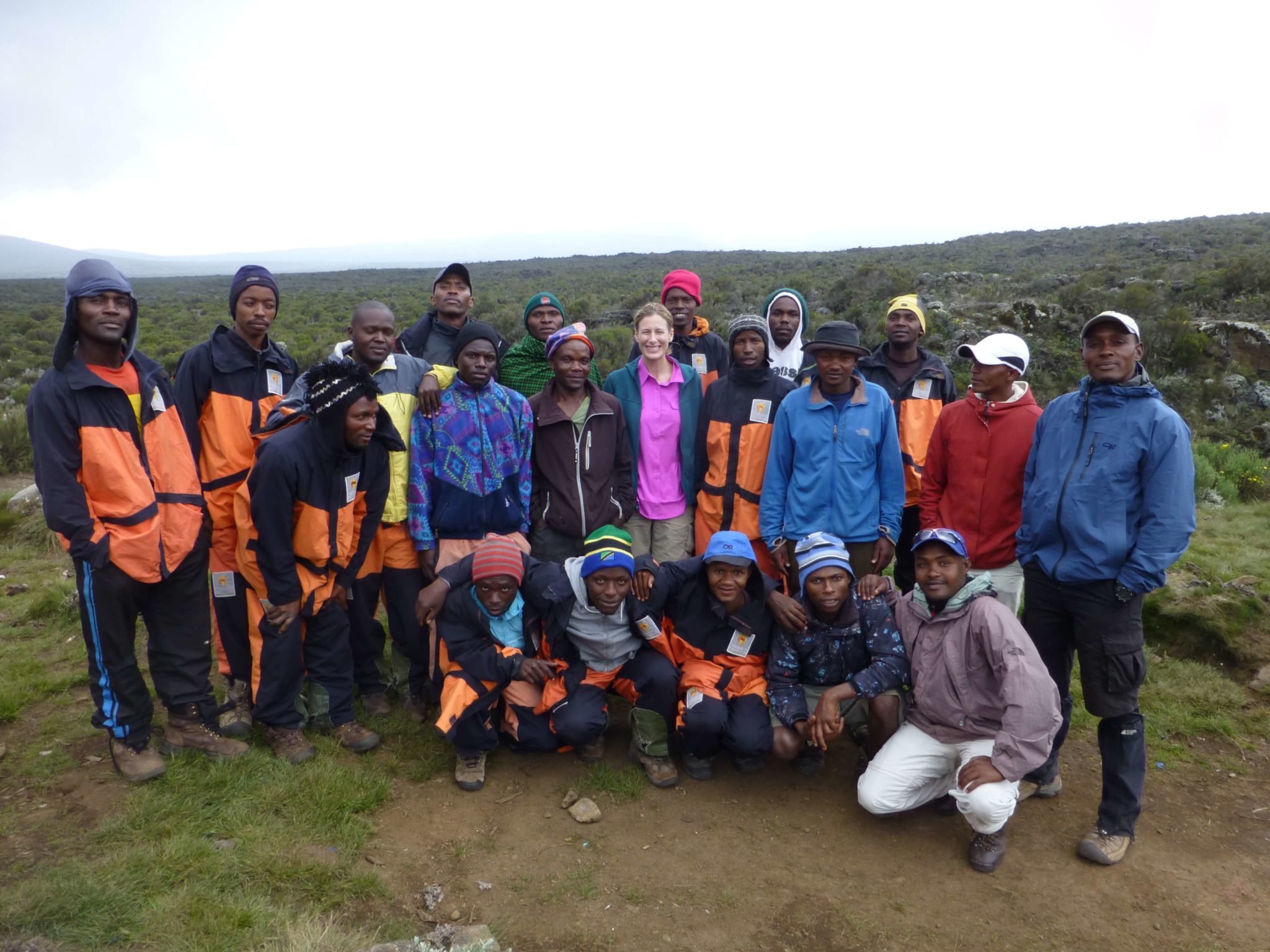
You can read the full story of Shilagh’s journey, as well as her reflections on what Kilimanjaro meant to her, here:
http://www.uwhealth.org/news/a-personal-journey-putting-sport-psychology-to-the-test/48006

